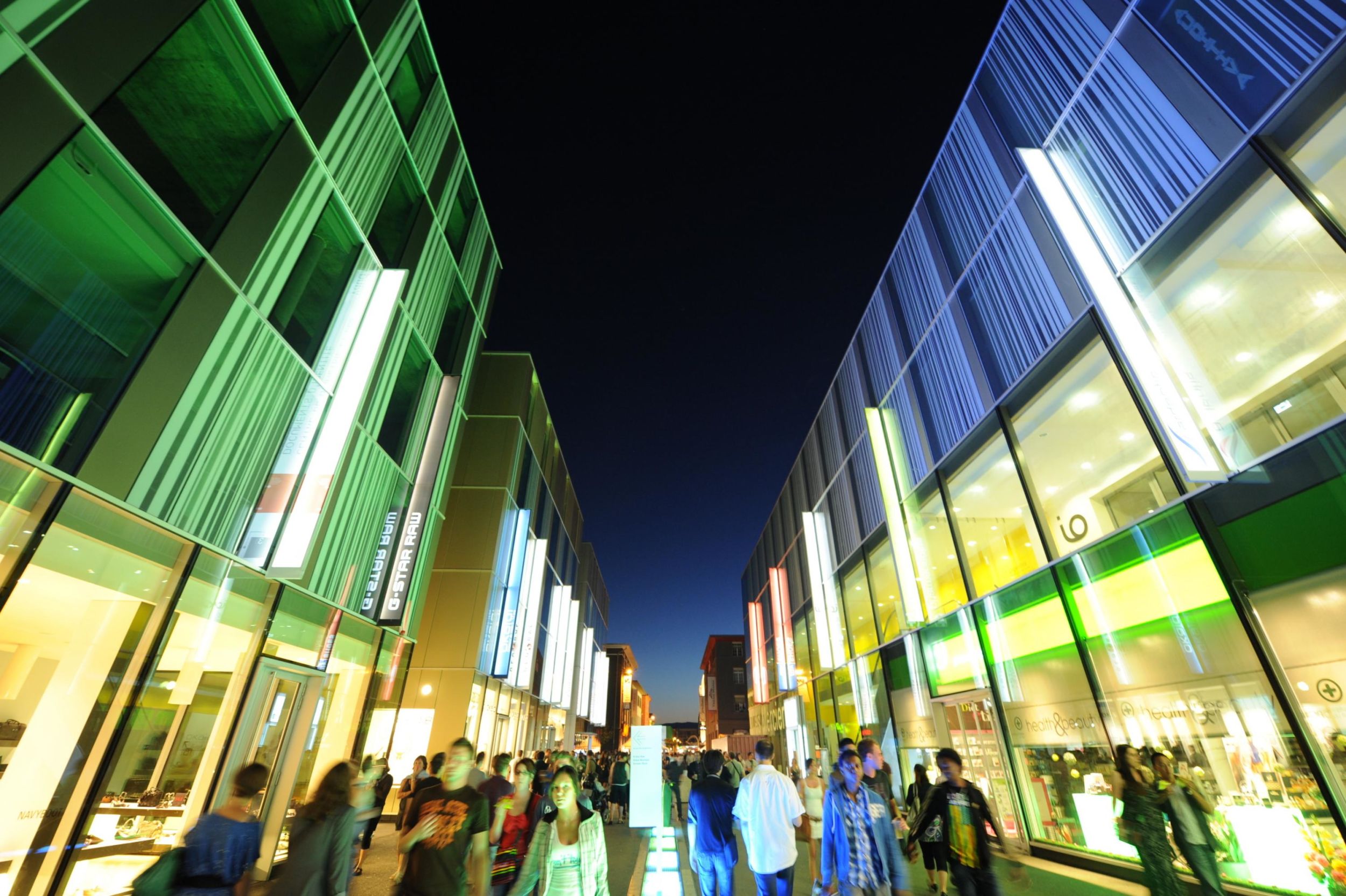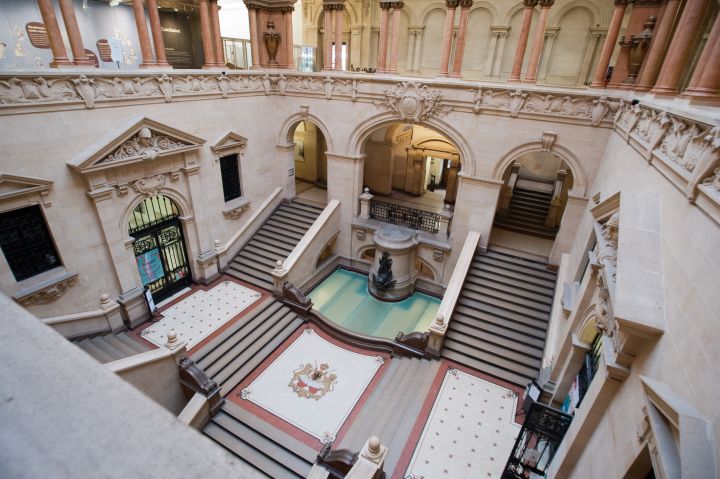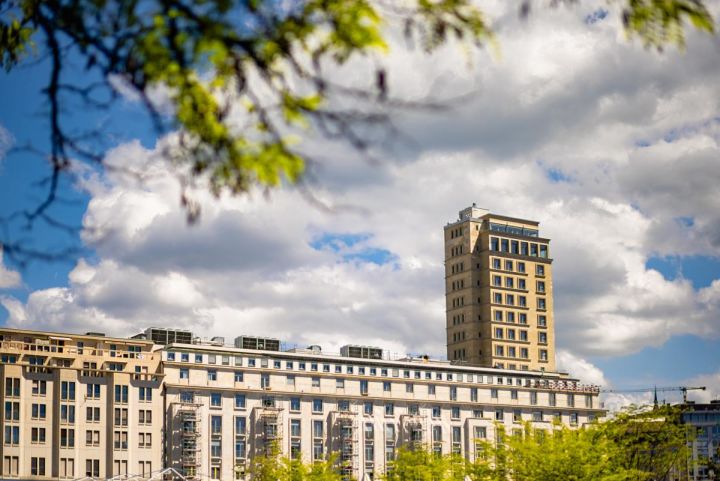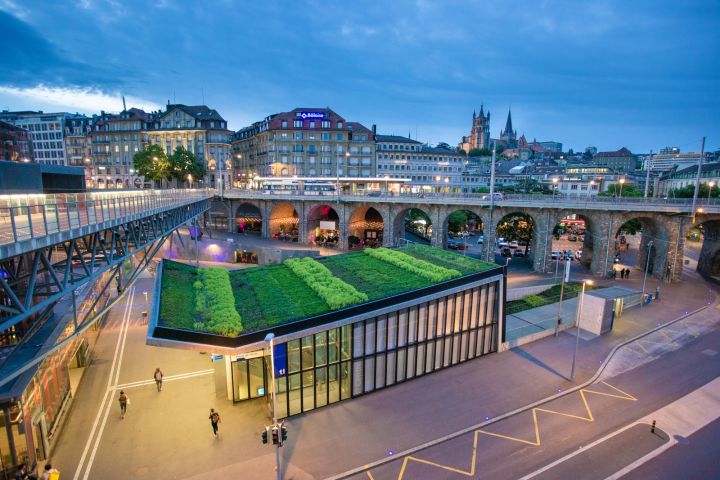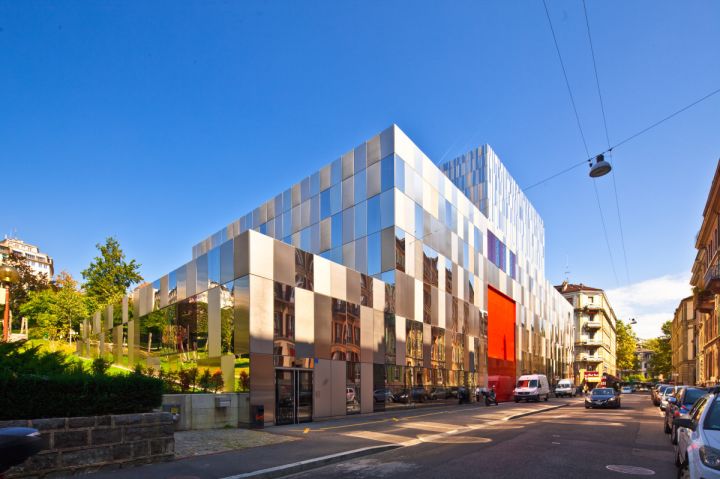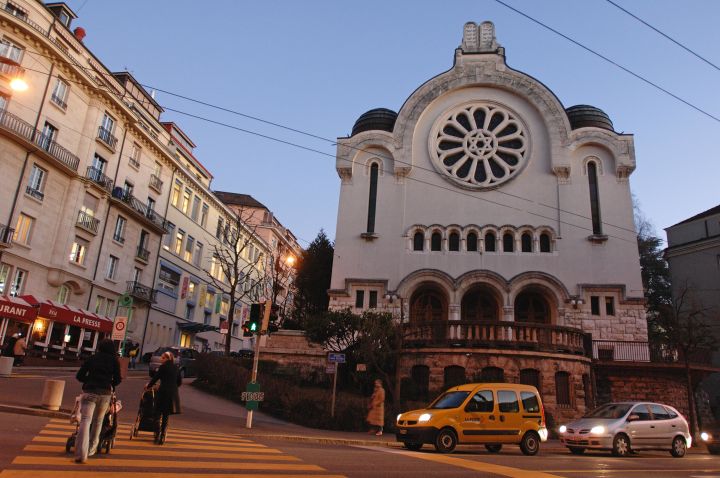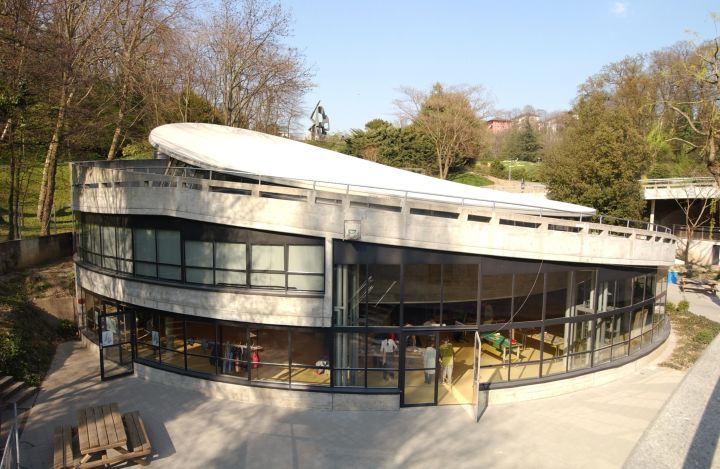As the population grew, more living space was created by adding stories to the existing houses or dividing large rooms into several smaller ones. Traffic continued along the narrow ways that crossed the rivers at points where the valley sides were closest.
Since 1850 Lausanne began a very rapid expansion. The first of several important civil engineering projects was the construction in 1844 of the Grand-Pont, link in the almost level circuit. In 1856 when the railway arrived in Lausanne, the increased need for transport led to the construction of the cable railway between the station and the lake. The river Flon was covered over, to create a new industrial and commercial district.
Three figures show Lausanne's population growth: 15,000 in 1850, 65,000 in 1910, 120,000 in 1999. From 1870 onwards intensive building took place outside the Old Town, without any guiding plan until 1905. The quarter of Georgette for example, like the one below the station, is made up partly of individual apartment buildings, partly of a continuous street frontage. Schools, churches, or hotels reflect the newer architectural projects of the time, while many of the constructions in the centre were erected after massive demolition of ancient buildings. This expansion of Lausanne has continued all through the 20th century, not always with the happiest results.
Since 1850 Lausanne began a very rapid expansion. The first of several important civil engineering projects was the construction in 1844 of the Grand-Pont, link in the almost level circuit. In 1856 when the railway arrived in Lausanne, the increased need for transport led to the construction of the cable railway between the station and the lake. The river Flon was covered over, to create a new industrial and commercial district.
Three figures show Lausanne's population growth: 15,000 in 1850, 65,000 in 1910, 120,000 in 1999. From 1870 onwards intensive building took place outside the Old Town, without any guiding plan until 1905. The quarter of Georgette for example, like the one below the station, is made up partly of individual apartment buildings, partly of a continuous street frontage. Schools, churches, or hotels reflect the newer architectural projects of the time, while many of the constructions in the centre were erected after massive demolition of ancient buildings. This expansion of Lausanne has continued all through the 20th century, not always with the happiest results.
-
Today, the Palais de Rumine houses the cantonal museums of geology, zoology, archaeology and history, the Cantonal Money Museum, and the cantonal and university library.
-
Built in 1932 by Alphonse Laverrière, Bel-Air Tower was based on the American model (with a metal framework covered in stone). Standing at a height of 55 metres, this was one of Switzerland’s first “skyscrapers”.
-
Flon is the heart of the city of Lausanne, pulsing with life, day and night, in a modern and innovative setting. It’s the town’s architectural success: this district of former warehouses that begins at the Place de l’Europe was rehabilitated as a living area with a wide array of restaurants, bars, clubs, boutiques, cinemas, bowling and exhibition spaces. A must is to enjoy a drink on one of the rooftop terraces. In the winter, you can enjoy the ice-rink and in the summer the sandy beach.
-
Renovated in 2012, the Lausanne Opera House sports a facade as brilliant as the virtuosos who perform on its stage. Opera obviously holds centre stage here, along with concerts, dance shows and productions for children, an audience the Lausanne institution is keen to encourage.
-
This neighbourhood was planned in 1870, as a link between the station and the Grand-Pont. To the west the street is a continuous frontage, to the east many buildings appear as separate apartment houses.
-
The National Exhibition of 1964, held in Lausanne, figured many pavilions considered as notable architectural innovations. Most have disappeared but this one survives.




